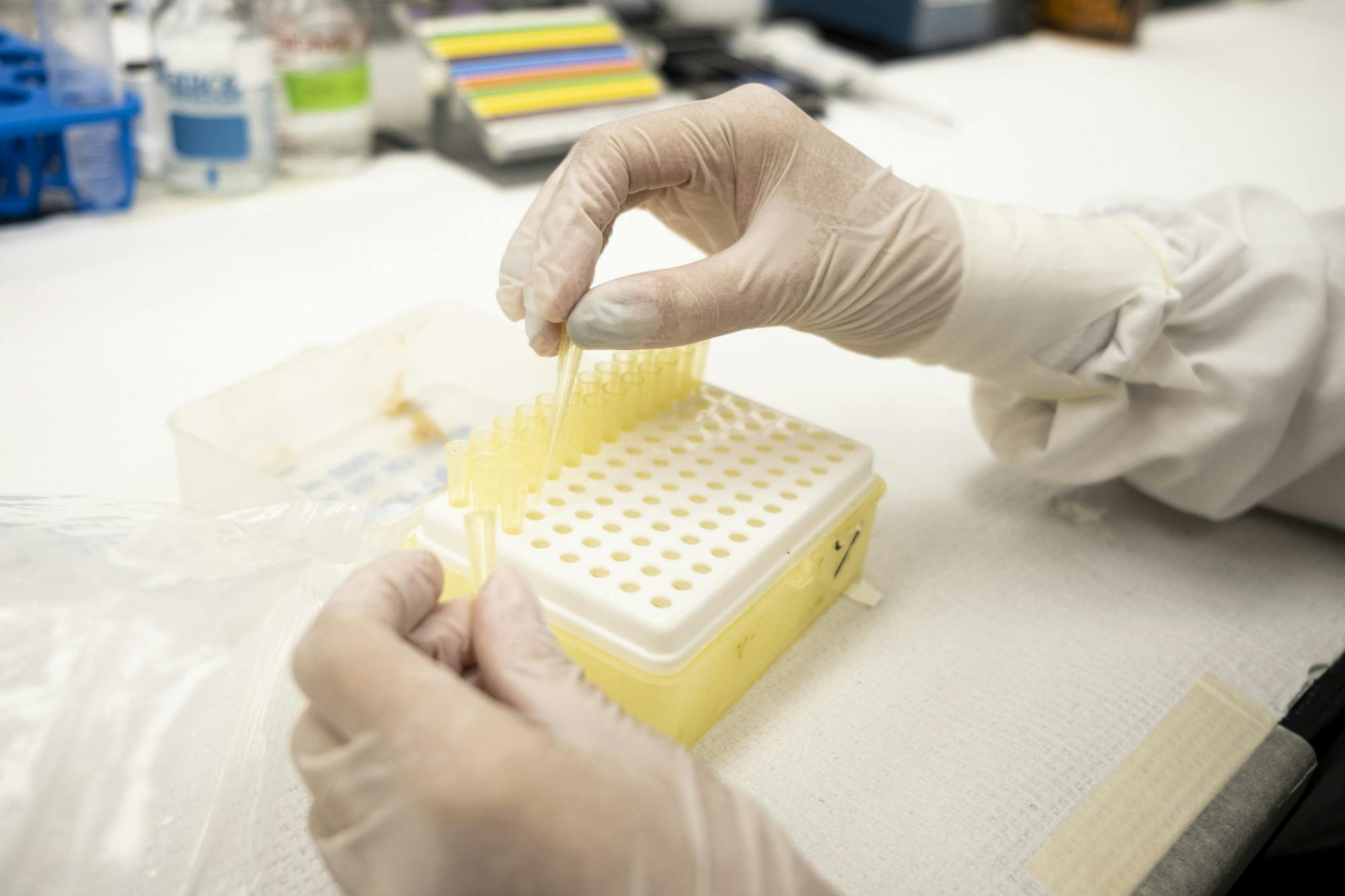As one of the top research universities in the world, Michigan State University is constantly advancing, innovating and changing the future of the world.
Here are some recent research efforts you might’ve missed.

Maya Salamey fills pipette tip containers for sterilization at her summer campus job working at the Contreras lab at the Vetrinary Medical Center on MSU's campus on June 29, 2021. Salamey works on research on stem cells at this lab.
As one of the top research universities in the world, Michigan State University is constantly advancing, innovating and changing the future of the world.
Here are some recent research efforts you might’ve missed.
MSU to grow its electric vehicle fleet by nearly 370 vehicles
The university announced that it plans to convert 369 vehicles in its fleet from internal combustion engine vehicles to fully electric vehicles within the next decade.
This transition will move MSU closer to its goal of achieving climate neutrality by 2050 as the change will decrease the university's overall carbon footprint by 18,945 metric tons of carbon dioxide long-term.
To jumpstart the commitment, MSU purchased 40 new electric vehicles and is building on to its electrical charging grid.
New invention makes surgeries easier, faster and safer
MSU Professor and head of Small Animal Orthopedic Surgery at the MSU Veterinary Medical Center Dr. Loïc Déjardin invented and patented the Sacro-Iliac Luxation Instrumentation System, or SILIS, and a Minimally Invasive Lucent Aiming Device, or MILAD.
The invention will make surgeries for injured sacroiliac joints — where the spine connects to the pelvis — more effective and efficient.
Sacroiliac joint luxations and fractures, or SIL/F, are often found in dogs and cats who have suffered vehicle injuries. Traditionally, these injuries can be treated through three methods: open reduction and internal fixation, invasive surgery with inconsistent success rate, and minimally invasive osteosynthesis procedure— where an intraoperative imaging modality called fluoroscopy creates an “X-ray movie” of the surgical site, helping avoid invasive surgery but exposing both the patient and surgical team to ionizing radiation and “cage rest,” prolonging pain and suffering.
The SILAS-MILAD solves these issues as it only requires small incisions and the surgical team can step away while radiographs are taken. In fact, the invention is so productive that it reduces SIL/F surgeries from 1-2 hours to 30 minutes.
PET scanner arrives at Doug Meijer Medical Innovation Center
Michigan’s first total-body PET/CT scanner arrived this month at the MSU Radiopharmacy in the Doug Meijer Innovation Building.
The total body scanner scans cancer patients more effectively than conventional imaging, with a head to toe scan lasting as little as 60 seconds — a stark contrast to the 40 minutes of traditional scans.
BAMF Health will begin using the scanner in July to treat patients for prostate cancer and neuroendocrine tumors.
MSU researchers receive $3.7 million grant for autism research
A team of MSU researchers have received a five-year, $3.7 million grant from the National Institute on Deafness and Other Communication Disorders to study language in young children with autism.
The team is headed by principal investigator and assistant professor in communicative sciences and disorders in the College of Communications Arts and Sciences Courtney Venker. She is joined by clinical psychology professor Brooke Ingersoll, human development and family studies associate professor Ryan Bowles and speech and language pathologist Jenny Johnson.
The project is set to begin in June and has the ultimate goal of improving the ability to offer clinical recommendations on how to best support language development in young children with autism.
Traditionally, adults have been advised to simplify what they say to children with autism in order to create a clearer message. However, there is little evidence of the effects of this method.
Support student media! Please consider donating to The State News and help fund the future of journalism.
“The challenge is that, as a field of speech language pathology, we really don't have very much empirical or research evidence to guide the decisions that we're making about how to talk to kids,” Venker said. “The goal of this study is to gather the information that we need to make those evidence-based decisions and to better be able to individualize the way that we're talking because we know that some young kids who have autism have really strong language skills … other kids are not yet talking and may struggle to understand what they hear. So, we are bringing in kids kind of across that range of spoken language levels and we're going to be able to look at what works best for which child.”
To conduct the research, Venker and her team will work with over 100 young children with autism in MSU’s Lingo Lab.
“We are incredibly honored and humbled to have received this funding,” Venker said. “In a practical sense, what it means is that we're going to be able to have the support to actually carry out this project which we feel is very important for ensuring that kids have all the opportunities that they deserve.”